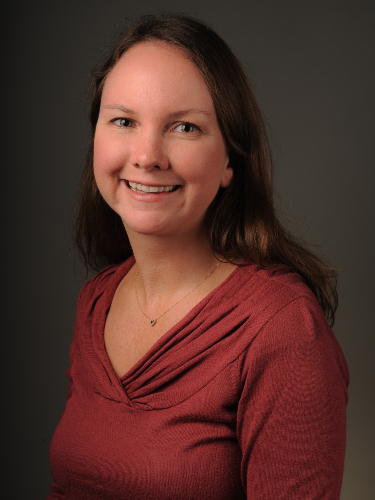The Bauer lab led by Associate Professor Elizabeth Bauer focuses on the interaction in the brain between fear, anxiety, and stress. In a new publication, Extended amygdala circuits are differentially activated by context fear conditioning in male and female rats, they find that the anterolateral portion of the bed nucleus of the stria terminalis (BNST-AL) is involved in fear expression in males, suggesting that the subnuclei of the BNST may function differently in male vs. female rats. This is especially important as anxiety disorders are observed to be more prevalent in women. Dr. Louise Urien, first author of this publication and postdoctoral fellow in the Bauer Lab (pictured below), joins us today to discuss their lab's findings and what we can expect to see from her next.
Tell us a little bit about yourself.
I'm French and I completed my PhD as part of the team of Dr. Aziz Moqrich, where I contributed to the understanding of the high heterogeneity of primary sensory neurons. I moved to NYC in 2015, where I did a first postdoc working on the integration of pain signal in the cortex as part of the team of Dr. Jing Wang at NYU Langone Health. I decided to join the Bauer lab in 2018 as I wanted to integrate my knowledge of the pain pathways with memory learning. Indeed, fearful memories are formed after the experience of a painful stimulus is encoded in a specific environment.
For those of us who are not experts in the field, please describe your paper. What are some of the important findings and what are the implications of your work?
Our work helps to unravel the sex differences encoding contextual fear. Previous studies have shown that in male rodents, the context in which a fearful memory occurs is encoded in a part of the brain called the bed nucleus of the stria terminalis (BNST). However we also know that this brain structure is sexually dimorphic. We then asked if male and female rodents encode contextual fear using the same brain pathways. We showed that in males, contextual fear is encoded by specific neurons connecting the BNST to the central amygdala, but not in females. This work highlights the importance of sexual dimorphism in encoding fearful memories.
How would you describe the Bauer lab environment? Do you have any specific approaches to mentorship/being mentored that you feel contribute to your success in the lab?
Working in the Bauer lab is extremely rewarding and I look forward to coming to work every day. We are a small team with the “whole range” of students from freshman to seniors. Most of our seniors have worked with us every week since sophomore year; they know the lab, the techniques, and the projects, so they are able to teach and mentor the younger students. This creates an environment that is a lot less stressful and vertical compared to having a boss who is overlooking the staff and students. Moreover, it is a great way for students to understand research. As Einstein said “if you can’t explain it simply, you don’t understand it enough”. We share projects, so everyone is involved and helps each other out.
Lastly, what is coming next for you as a researcher and scholar? Are there any exciting projects you'd like to give us a preview to?
I'm finishing a more complete study looking at the involvement of several brains structures, including the BNST, in encoding different type of fearful memories in males and females. Preliminary data seems to emphasize the fact that males and females don’t process fear the same way, which is extremely relevant for clinical studies as anxiety and fear related disorders are more prevalent in women.
We are also finishing an elegant study on the characterization of the brain pathways between the BNST and the hippocampus, which encode contextual safety. We will pursue the investigation by using chemogenic techniques and more powerful tracing tools to better understand the role of different brains structures in contextual fear.
This summer, we will welcome two new students for the Summer Research Institute (SRI) who will work on the influence of stress on contextual fear in adult and adolescent male and female rats. We have a whole range of amazing projects and we hope to share these studies with a lot of new students!




